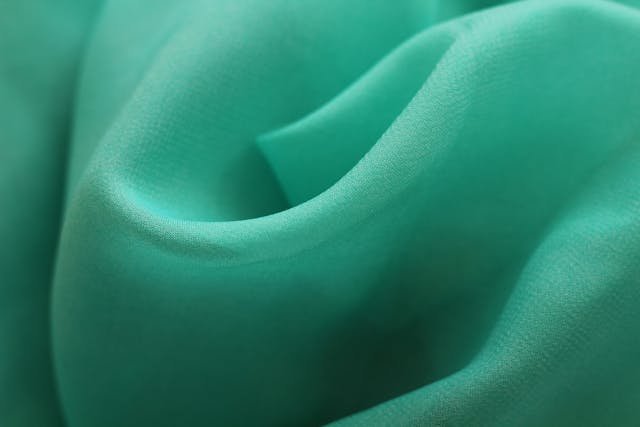Last Updated on March 21, 2024 by Saira Farman
Did you know that polyester was the world’s first man-made fiber used in fabrics? The textile industry changed dramatically in the 1940s with the discovery of polyester.
Table of Contents
What fabric is polyester fabric
Polyester is the general term for any fabric or textile made from polyester yarn or fiber.
Polyester fabric is a kind of chemical fiber clothing fabric which is widely used in daily life. Its biggest advantage is wrinkle resistance and shape retention, therefore, suitable for coat clothing, all kinds of bags and tents and other outdoor supplies.
What are the characteristics of polyester fabric?
Positive characteristics:
- Polyester is very durable and can withstand a wide range of chemicals.
- It is a popular fabric in the fashion world because of its properties that resist shrinkage and stretching.
- It is also wrinkle resistant and wear resistant.
- The fibers used to make polyester are very strong and lightweight.
- Withstand the sunlight well.
- Dye easily.
- It holds its shape well and does not wrinkle easily.
- Polyester fabrics are easy to care for and can be washed and dried at home.
- It is a quick-drying fabric, making it a popular choice for outdoor wear.
Read More: Why should people buy wool bedding?
Negative characteristics:
- Easy pilling.
- It tends to attract static electricity, as well as lint and dirt.
- Easy to grease and hard to remove.
- In contrast to natural fabrics such as cotton, polyester does not absorb water well.
- Polyester clothing made of polyester does not breathable.
Polyester is often mixed with other natural and synthetic fibers to enhance the properties of both. Polyester is often mixed with cotton to make it more absorbent and comfortable. Polyester can also be blended with wool to enhance the strength of wool, giving it elasticity and good drape. Polyester also blend with nylon, which are the basis of microfiber fabrics, they can be made into wholesale seamless leggings, underwear, etc.
How is polyester fabric made
1.Creating a Monomer
The process of creating polyester fiber begins with reacting ethylene glycol with dimethyl terephthalate at high heat. This reaction results in a monomer.
2.Creating a polymer
The monomer is then reacted with dimethyl terephthalate again to create a polymer.
3.Extruding
This molten polyester polymer is extruded from the reaction chamber in long strips, and these strips are allowed to cool and dry, and then they are broken apart in to small pieces.
4.Spinning
The resulting chips are then melted again to create a honey-like substance, which is extruded through a spinneret to create fibers.
5.Finishing
The resulting polyester filaments may be cut or reacted with various chemicals to achieve the correct end result.
Usages of polyester fabric
Apparel manufacturing
You can now easily identify the main use of polyester in the fashion industry. If you know the properties of polyester, you will understand why it is widely used to make clothing. The lightweight and strong properties of the fiber are used to make clothing more durable and wrinkle-free. There is a type of new polyester material called Cationic Polyester, it’s more and more popular in the apparel production area those years.
- Household items
You’ll find a lot of use of this fiber in the household goods field. The fiber is used to make colorful objects from curtains to upholstery. In fact, you’ll also find blankets, rugs, sheets, pillowcases, quilt covers, etc. made of polyester. There are other examples of different polyesters, such as home accessories, furniture, car seat covers, etc.
- Microfiber items.
Microfiber fabrics are ideal for moisture-proof or fine cleaning of glass surfaces.
- Bags and backpacks.
Tote bags, fitness bags and backpacks are usually made of polyester or polyester blends, which is cheap and durable.
How to clean and maintain clothes made of polyester fabric
1, The washing process should avoid vigorously rubbing.
2, choose neutral detergent, try not to use alkaline detergent (such as washing powder, soap), alkaline detergent will make some dyes hydrolyze, fall off from clothes.
3, Soaking meanwhile washing, shorten the soaking time,soak the clothes for 15 minutes, and then wash the clothes normally.
4, avoid exposure to the sun.
5, Store in a dry place.






















